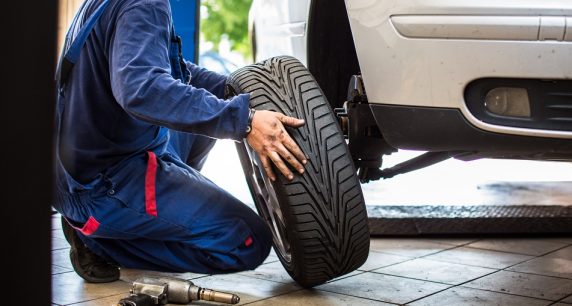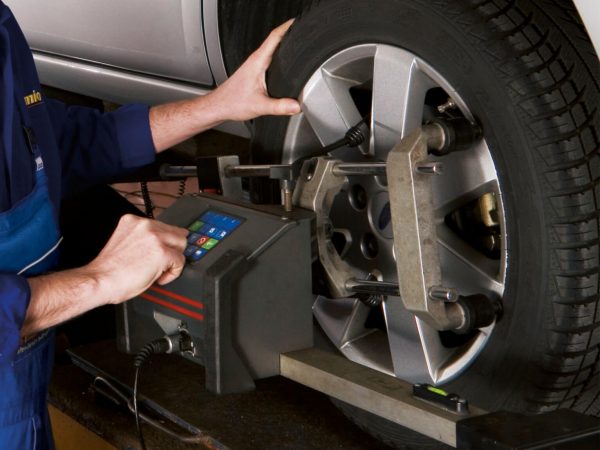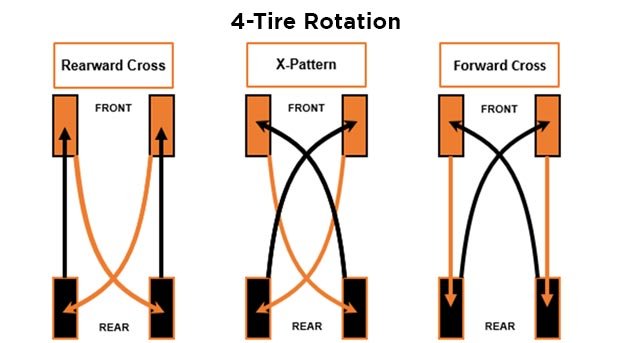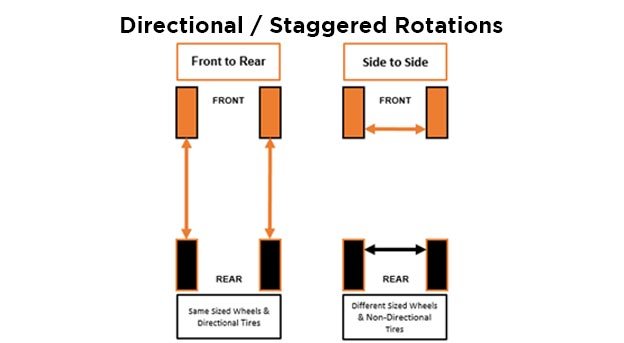What Happens If You Don’t Rotate Your Tyres?

Tyres are essential to a vehicle for it can support the car’s weight, absorb road shocks, transmit braking forces or most commonly and vitally, keep straight or change car directions. In short, you can’t have a car run without its wheels.
For its importance, having tyres in good condition means having yourself a comfortable and safe drive. Thus, take care of your tyres by keeping them in checked regularly.
Before finding out what happens if you don’t rotate your tyres, please remember never overlook your tyre rotation.
Here’s why.
WHAT IS TYRE ROTATION?
Tyre rotation is one of the maintenance techniques to overcome the situation when 4 tyres wear unevenly by regularly changing the positions between the front-rear, left-right tyres together. In other words, tyre rotation is also transferring tyres from one position to another in the same vehicle.
Proper tyre rotation will help the car reduce the uneven wear of 4 tyres. Thereby helping to increase tyre life, improve driving safety and save up to 3% on fuel costs when operating the vehicle.
WHY TYRE ROTATION IS IMPORTANT?

Rotating the tyres is part of any vehicle’s maintenance to ensure better performance and safety. You need to move the rear wheels onto the front axle because the front wheels carry the most weight—resulting in the front tyres wearing down sooner.
You’ll often see slightly more wear on the outside edges of the front-wheel tread because, as you turn, the wheel leans onto those edges. Regularly rotating the tyres will allow all the wheels to wear evenly.
WHAT HAPPENS IF YOU DON’T ROTATE YOUR TYRES?

If you don’t rotate your tyres periodically, there can be a number of consequences such as:
𝟏. 𝐒𝐡𝐨𝐫𝐭𝐞𝐫 𝐥𝐢𝐟𝐞 𝐬𝐩𝐚𝐧: Because the wear of the tyre is only concentrated in certain areas, when you do not rotate the tyre, the tread will worn quickly and shorten the lifespan of your tyres.
2. Uneven tyres wear: If you don’t do rotations regularly, the tyre treads can wear down unevenly which can create a rough and unstable driving surface.
3. Effect on the brake: Without regular rotations, the brake does not produce the same good effect as the original which can potentially cause danger to the driver.
4. Less traction and grip: Uneven wear will cause you to loss of traction and grip. You may not able to guarantee the grip of the tyre when the conditions of the road is slippery.
5. High risks on puncture: Tyres that are not regularly rotated can effect some parts of the tyre to become severely worn down. If this happen, the chances of getting puncture is high.
HOW OFTEN DO I NEED TO ROTATE?

It’s a good idea to rotate your tyres roughly every 10,000km / 6,000 miles. There are other factors that may mean you need to rotate your tyres more frequently:
- High speeds, heavy loads, long distances: if you regularly drive at high speed and long distances, or carry heavy loads, then extra strain might mean slightly more frequent rotations.
- Uneven wear: you should rotate them as soon as possible if you notice uneven wear.
- Humming sound: if they emit a humming sound when you’re driving on a smooth road, it might be time to look into rotation.
CAN I DO A TYRE ROTATION MYSELF?
We recommend that you go to your dealer or a workshop to have a professional do it.
But you can do it yourself, and it’s easy enough to do. You don’t need any specialist tools – just some space and a few hours. Always check your vehicle owner’s manual for any recommendations by your vehicle manufacturer.
Things to consider if rotating yourself
- Rotating front to back: you should only rotate tyres front-to-back if the tires are all the same size.
- Different sized tyres: some vehicles come with different sized tyres on the front and rear axles.
- Directional tread patterns: when rotating tyres that have a directional tread pattern, make sure you follow the arrows on the tyre’s sidewall.
- Dismount, mount and rebalance: you’ll need to do this if your vehicle uses different-sized directional tyres, or wheels with different front and rear offsets.
HOW SHOULD YOU ROTATE TYRES?
The way your tyres are rotated depends on vehicle’s drivetrain—-wheel, four-wheel, all-wheel, or front-wheel—as well as the type of tyres you drive on:
- Rearward Cross – For rear-wheel, four-wheel, and all-wheel-drive vehicles, the rear wheels are rotated directly to the front and remain on the same side, whereas the front wheels are crossed over to the opposite side of the vehicle as you move them to the back.
- X-Pattern – An option for front-wheel drive, namely light trucks and sedans, the X-Pattern involves rotating both front tyres on opposite sides to the back, and the back wheels to opposite sides in the front.
- Forward-Cross – Most manufacturers of front-wheel drive vehicles recommend moving your front wheels directly to the rear (i.e. on the same side of the vehicle), and then moving the rear tires up front by crossing them over to the opposite side of the vehicle.

- Directional tyres – By their very nature, directional tyres can only run on one side of the vehicle, and can therefore only be rotated front to back.

CONCLUSION
For the importance of the tyres in one vehicle, you should never overlook the maintenance part for them. Take your time and notice the changes in your tyres regularly.
By having the tyre rotation done correctly and timely, you do not only improve on the car’s performance but also enhance the safety of your own self. We hope this article helps you to know exactly what happens if you don’t rotate your tyres.



